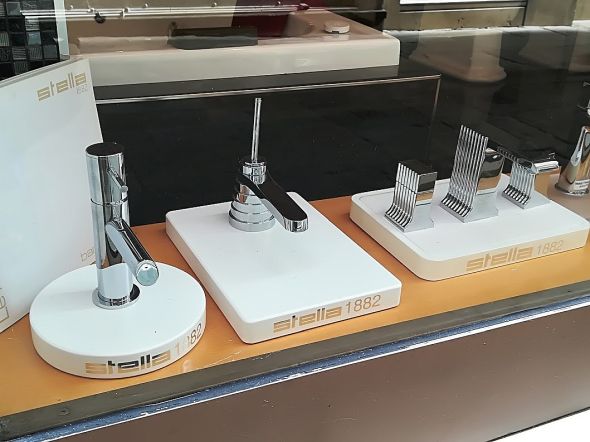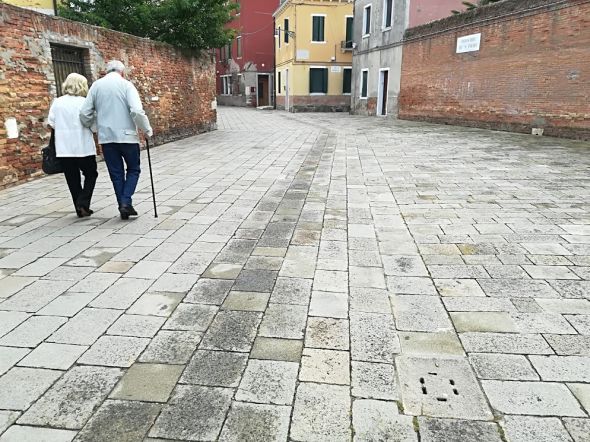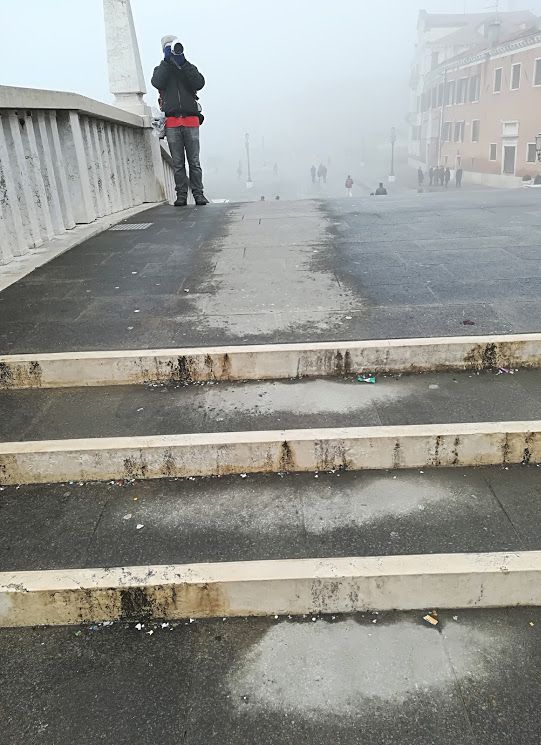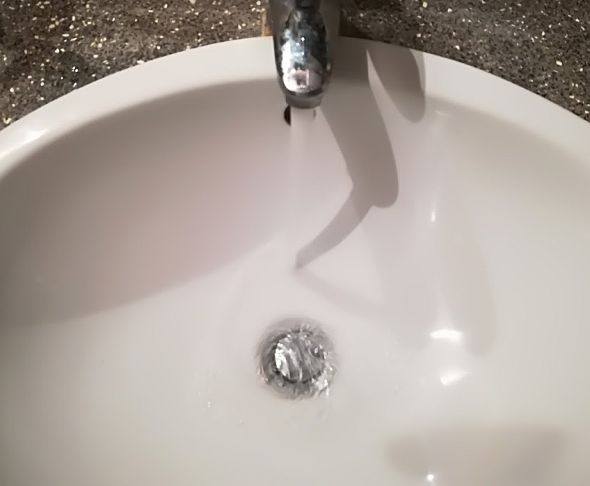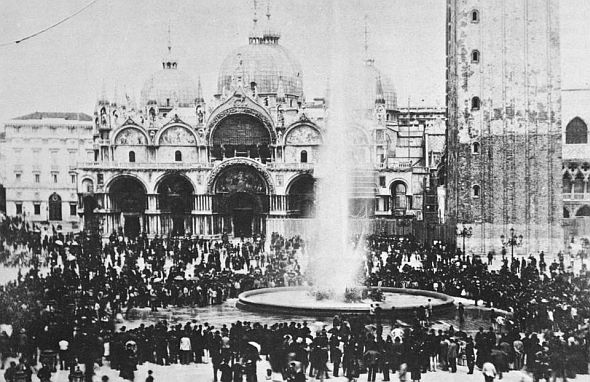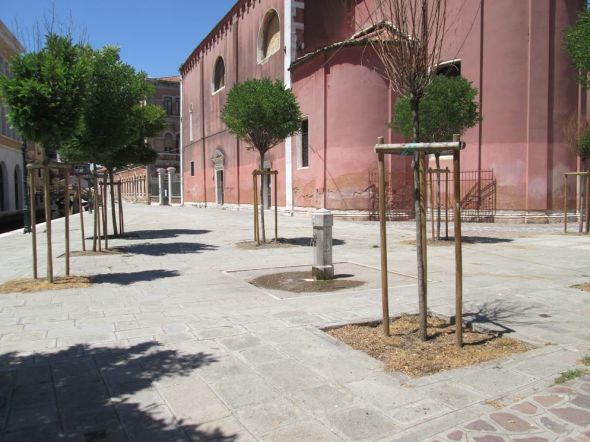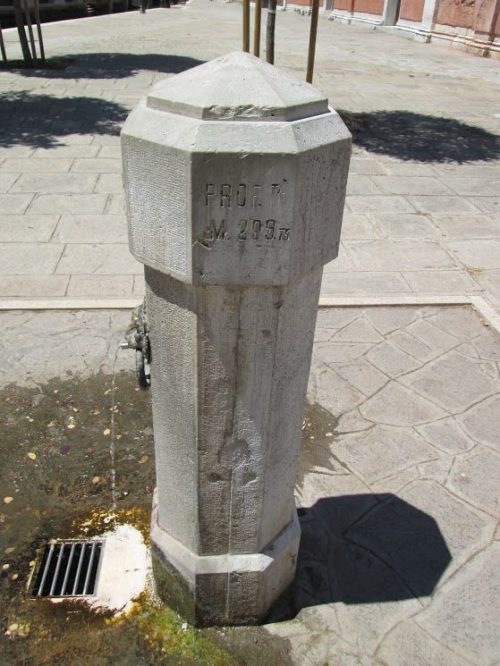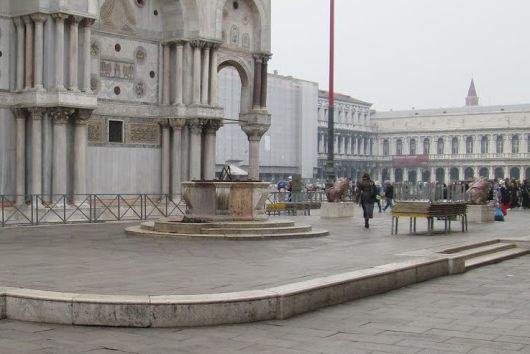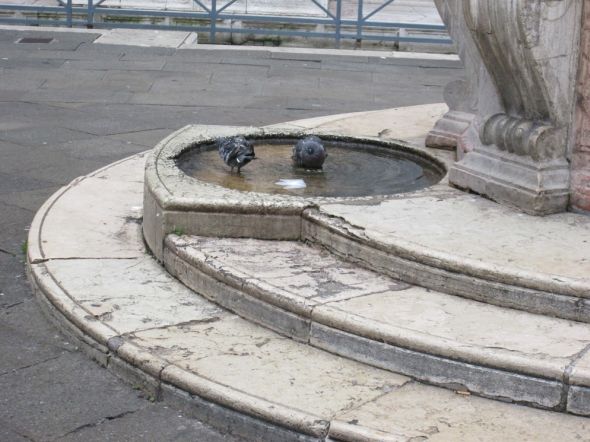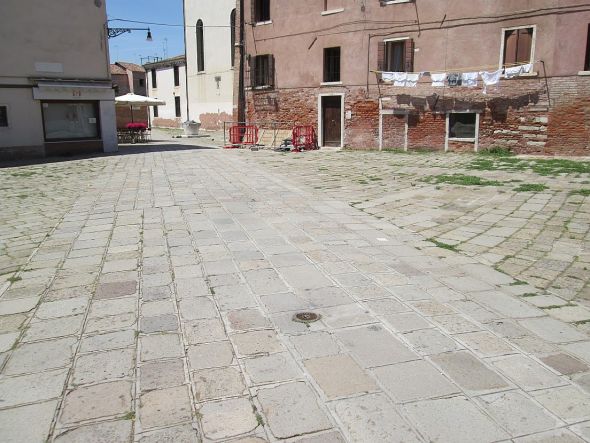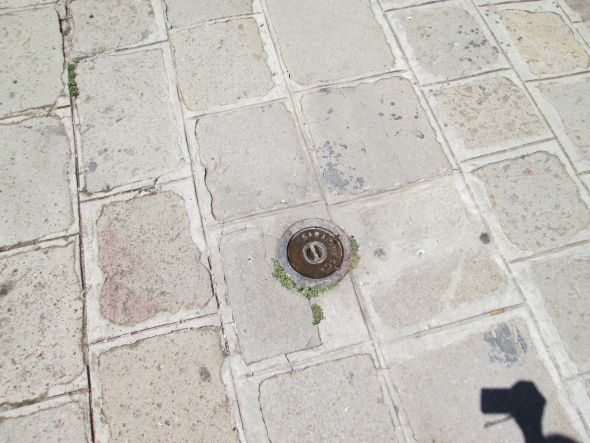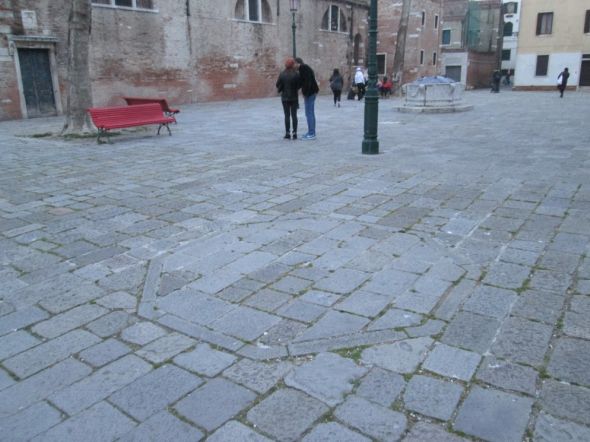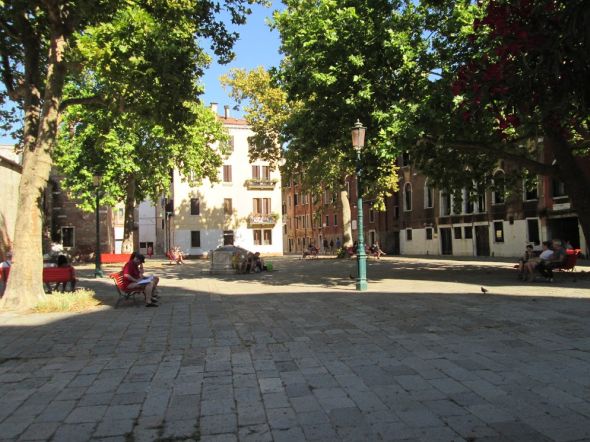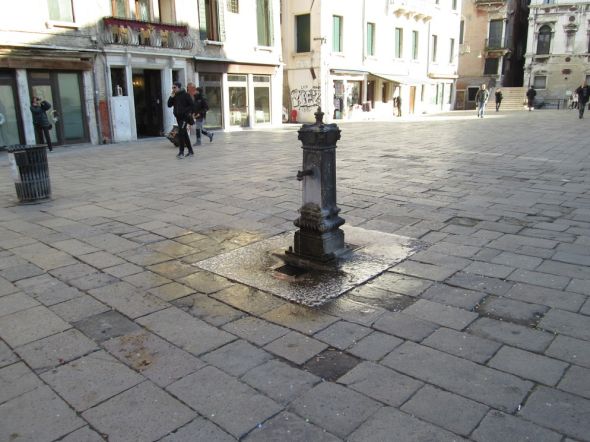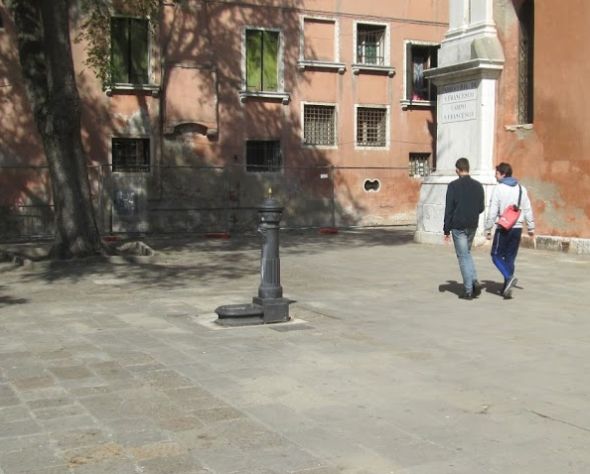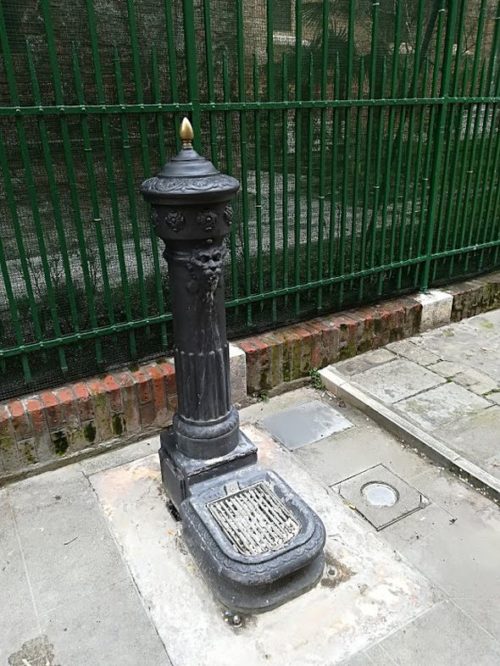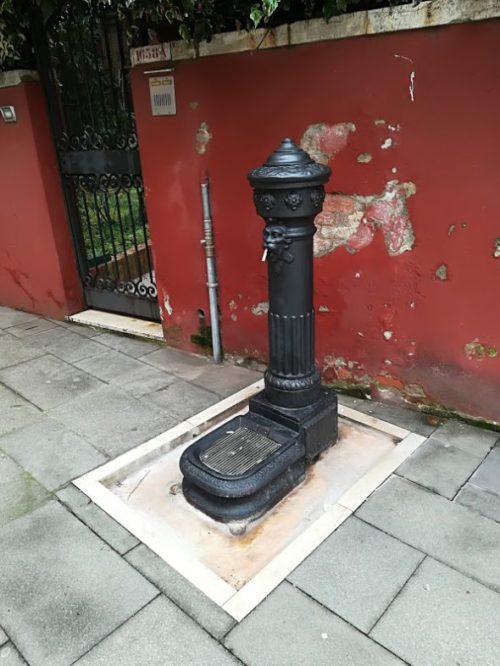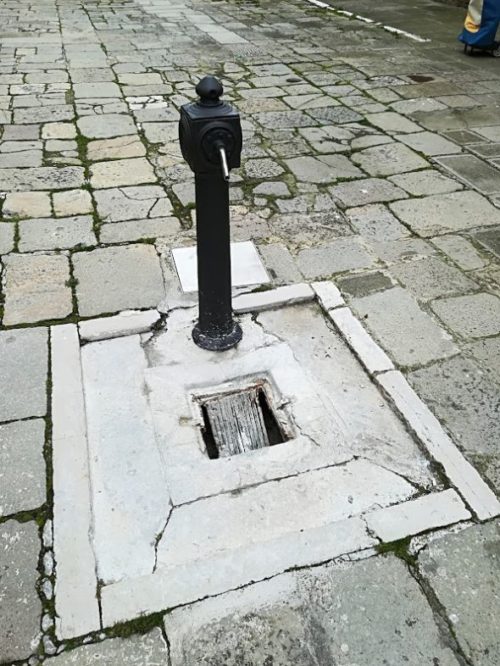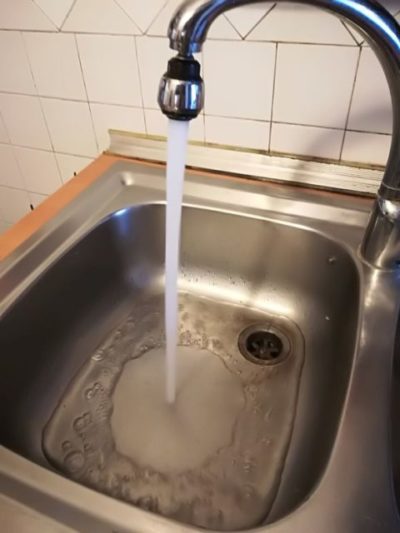
To pick up the story more or less where we left off, Venice continued to hydrate itself with water ferried across the lagoon in boats — plus the occasional well — until 1884, when the aqueduct was finally constructed that is bringing you water even as you read this.
I’m not a connoisseur of aqueducts, though I grasp the most basic outlines of the enterprise. But when I went to the Museum of the Aqueduct (not made up) near Piazzale Roma I was amazed, impressed, and totally gobsmacked by the amount of freaking knowledge one has to have in order to construct a public water supply, knowledge that’s expressed in formulas that look like angry porcupines with square roots instead of quills.
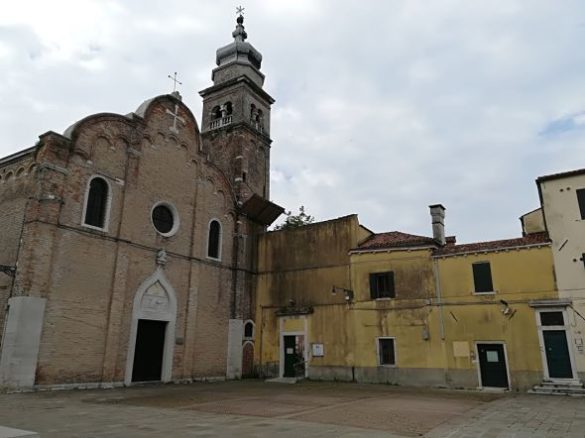
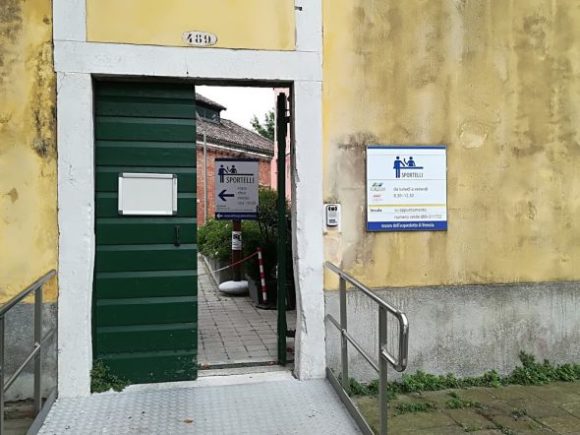
Here is the network of pipes in Venice today (I regret the uneven background color; the lighting in the museum was just that way):
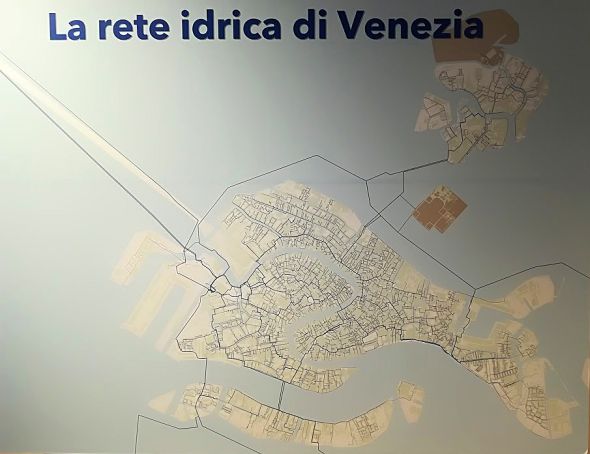
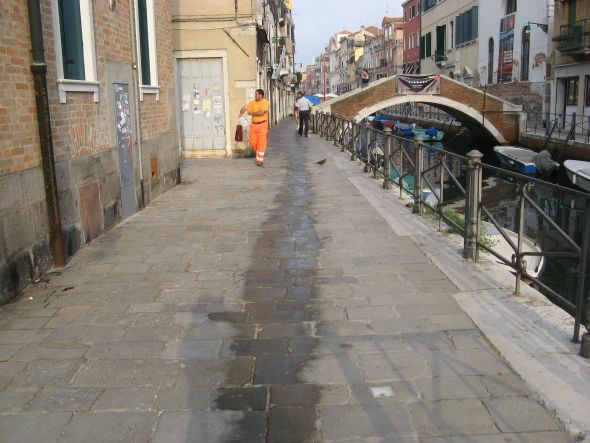
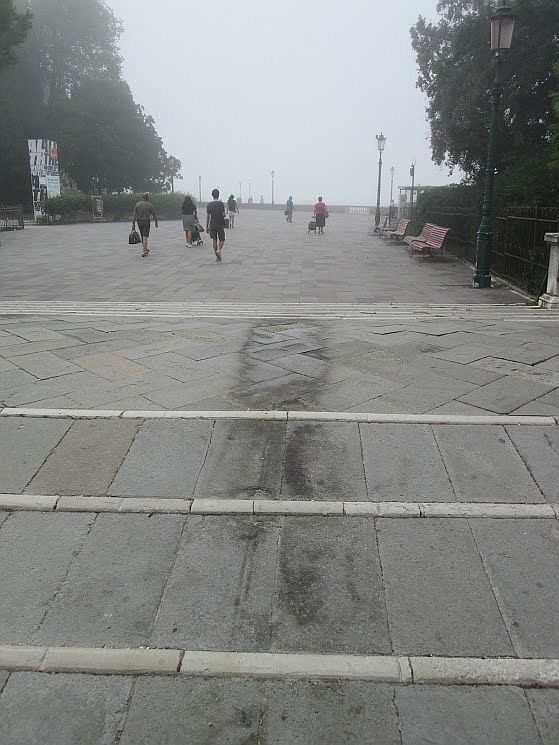


According to VERITAS (Venezia Energia Risorse Idriche Territorio Ambiente Servizi), the latest edition of the water-and-trash-collection entity, the water system of the 44-town province of Venice is respectably vast. Let me say that statistics quoted by Veritas tend to vary according to assorted parameters, so I’ve taken the more modest numbers available in an effort to keep as close to the facts for the historic center as I can.
The distribution network of the aqueduct is more than 1,150 km (714 miles), 300 km (186 miles) of which are in the historic center. These pipes provide the Comune of Venice (261,321 inhabitants, including Mestre) with more than 45 million cubic meters of water a year, or 11,887,742,356.116679 gallons. Eighty-six per cent of this ocean of H2O is groundwater drawn from 49 wells (another source says 60 wells) between Venice, Padua and Treviso, and a small part from the Sile river which is made potable at Ca’ Solaro (Favaro). But it was a long, arduous, and costly path that brought us to this shining moment.
At the fall of the Venetian Republic in 1797, the population was about 150,000; the following two decades saw an intense depopulation at an average rate of 21 per cent per year. By 1820 there were only 100,000 people in Venice; after the cholera epidemic of 1838 only 93,500 inhabitants. Then began a gradual recovery and by 1857 the population was 120,414.
It was long since obvious that the hygienic/sanitary situation of the city had become extremely precarious. Water was still being brought from the mainland, but it wasn’t sufficient, and the once-glorious wells had been left to die. Veritas explains this by saying that the wells were at risk of infiltration of salt water via acqua alta and the necessary maintenance was difficult and expensive. I take that to mean “Nobody wanted to bother,” because the Venetian Republic didn’t seem to have any trouble maintaining them.
In any case, the situation was becoming dire. A survey commissioned by the city government in 1873 revealed that of a total of 4,329 wells, 2,620 were “mediocre,” 340 “muddy,” and 461 were “fetid.” And lack of any sewage treatment system only made everything worse.
EPIDEMIOLOGICAL INTERLUDE #1
To appreciate the importance — even urgency — of building an aqueduct for Venice, some context is necessary. In the 19th century, Venice (and most cities in Italy) (and Europe) was a hotbed of infectious diseases. Sorry to ruin your images of glamour, but parts of Venice more closely resembled Dickensian London than the refulgent Serenissima.
Cholera, unknown in Europe before the 1800’s, began to work its way across the continent. Major epidemics struck Venice in 1835-36, 1848-49, 1855, 1873, interspersed with smallpox, measles, and typhoid, terrifying diseases that flourished in poverty-stricken, cramped, feculent cities and which were vaguely battled by bewildered doctors and exploitative folk healers. Descriptions of the streets and smells in the most degraded neighborhoods will not be transcribed here — you’re welcome — but a city having more than 100,000 inhabitants with a lugubrious water supply and no sewage disposal other than the nearest canal basically describes itself. Venice wasn’t alone; in most Italian cities of the 19th century, sufficient potable water and adequate sewers simply did not exist. “Deadly pathogens,” as one writer put it, “led a very public existence here.”
The cholera epidemic of 1836 killed 2,066 persons in Venice; in 1849 cholera carried away 3,839 victims. Unable to keep up with burials, the city simply stacked the cadavers in the stifling August heat in the area in front of the church of San Pietro in Castello.
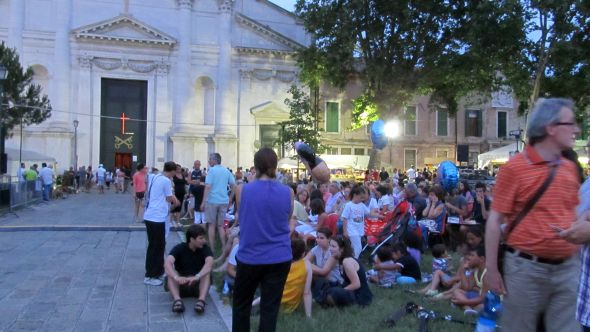
Naturally the desperate quarantines and fruitless cordons sanitaires that were imposed across Italy meant that commerce was strangled, and when the cholera relented, Venice was on its knees economically as well. After the epidemic of 1854-55, the price of every type of food in the city had doubled. The Swiss had collection boxes marked For the cholera victims among Venice’s poor installed in hotels in Ticino (a region in Switzerland neighboring Italy), a well-meaning gesture that infuriated the Italians.
These calamities led to predictable battles among the city’s politicians, while the distraught common people, having noticed the similarities between this new disease and poisoning, began to spread panicky rumors that the State was deliberately trying to kill them. In Calabria, according to a government minister writing later, “widespread rioting had broken out after the vast majority of cholera cases had occurred among the poor,
who … accused the rich of being directly responsible for the cholera outbreak. The government, it was believed, had dispersed poisoned powder in an attempt to kill off a sizeable portion of the region’s poor … Cholera riots were as widely feared as they were common.”
By the time cholera struck again in 1873, “build an aqueduct” was at the top of the municipal must-do list.
End of interlude.
In July, 1874, at the conclusion of the latest cholera epidemic, the city administrators put out a call for bids on an aqueduct. Six projects were submitted; the winning bid was from L.A. Ritterbandt and D. Croll Dalgairns of London. The plan was this: The water would come from the Brenta canal between Stra and Dolo (this sounds familiar); at Moranzani there would be filters, tanks and pumps (ditto); and a duct beneath the lagoon would ultimately reach Venice at the Maritime Station (Sant’ Andrea) where the water would fill a huge cistern. Here steam-powered pumps would send the water to private users, 111 public wells, and to boats assigned to supply the islands. The contract was signed on June 26, 1876 (two years after the call for bids…) but something must have gone askew because three years later there was still no sign of an aqueduct; a French company acquired the concession and the right to build it.
On March 15, 1880 the Minister of Public Works stipulated that the Veneta Society for Ventures and Public Construction (sub-contractor for the French company) must complete the work within three years. Cost: 1,100,000 gold French francs ($14,300,000 at current value) and 2,506,100 Italian lire (current value not found).
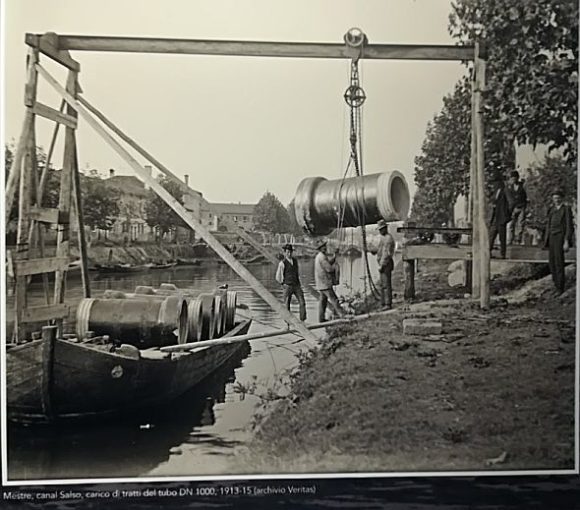
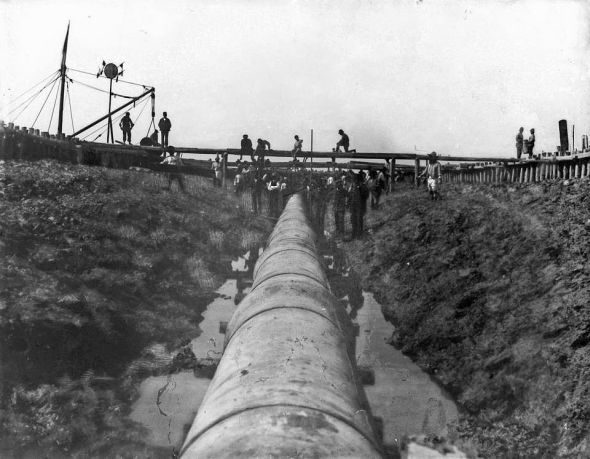
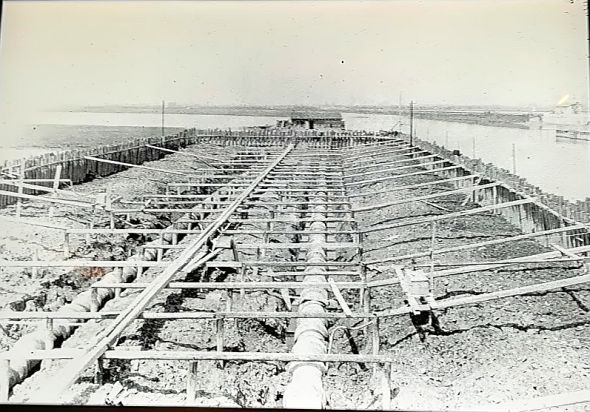

And, as you see, the work proceeded to a happy conclusion.
On June 23, 1884, let there be water! Ten years after the big decision was made, a jet of water from a magnificent temporary fountain in the Piazza San Marco leapt skyward to mark the inauguration of the new public water supply. Abundant! Clean! Glittering! Expensive! Before long, they had to adjust the ratio between number of users and number of coins per cubic meter because people weren’t signing up as predicted.
That taken care of, before long yet more water was needed, so some springs on the mainland at Sant’ Ambrogio (near Trebaseleghe) were tapped and more kilometers of pipe were laid.
On March 7, 1898 the network reached Murano, where the first spurt was celebrated with lights, stands (food, undoubtedly), a charity raffle, and a regata.
On October 1, 1900 the network reached the Giudecca.
On August 5 1901 the network reached the Lido. This must have been more than welcome, considering that the first sea-bathing establishments had begun to appear in 1857. The luxurious Grand Hotel des Bains had opened in 1900; I have no idea how their guests had been supplied with water. Maybe they bathed in prosecco.
July 18 1911: The aqueduct suffered a rupture which left the city, the islands and the estuary without water for eight days (in summer, of course). The investigation concluded that a boat probably ran over it. To avoid future inconvenience, the city approved construction of two additional ducts from the mainland to Sant’ Andrea.
May, 1911: Cholera strikes again. As it happened, German author Thomas Mann was visiting Venice during this period, so cholera became a major element of “Death in Venice,” published in 1912. I’ve never thought about how a tourist board might judge the relative value of a novel featuring a particularly repellent local epidemic if written by a Nobel laureate. Must have been awkward.
It’s interesting to note that, among some other factors I’ll write about elsewhere, these epidemics contributed to the 19th-century Romantic vision of Venice as sad, melancholic, somber, doleful. I’ve always wondered where that idea came from — you can’t blame everything on the fog — but it stands to reason that the general atmosphere (I don’t mean the olfactory) in 19th-century Venice often was not the most jovial.
EPIDEMIOLOGICAL INTERLUDE #2
So, I hear you ask — fancy new aqueduct and there’s still cholera? Certainly; not everybody was immediately hooked up to the system. You not only had to pay for the water, but for the connection and the meter. Lots of families couldn’t afford it.
Second, running water from the faucets did not automatically mean plumbing and flush toilets. Yes, drinking and washing with clean water is a huge step forward in public health, but most families continued with chamber pots or the occasional bucket and the nearest canal for quite a while. Naming no names, but someone I know extremely well reports that his family continued till at least the Fifties to use the chute in the kitchen (yes, in the kitchen) which went down into the canal. The opening was covered by a heavy stone which had a handle on it, which was convenient and mostly blocked out the odor.
I have now finally understood the deeper meaning of a common phrase everybody uses when they want to cut short a disagreement: “Metemo na piera sora.” “Let’s just put a stone on it.” I’d been imagining a tombstone, which connotes finality as well as anything else I can think of. But now the image of covering the toilet seems ever so much more powerful.
End of interlude. Also, end of story. I used to be fascinated by the lagoon, and still am, but I have to say that water pouring out of any faucet here has come to fill me with admiration and awe.

